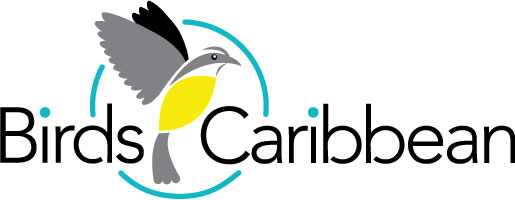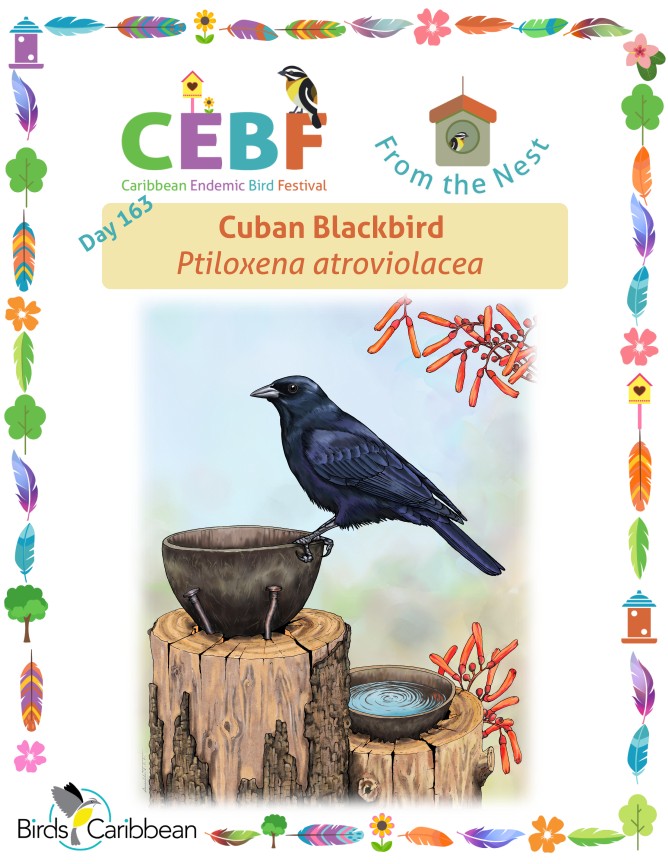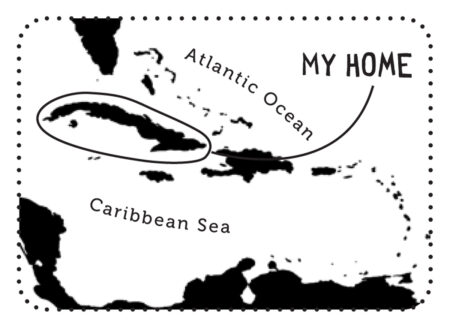Celebrate the Caribbean Endemic Bird Festival (CEBF) with us! Our theme in 2025 is “Shared Spaces: Creating Bird-friendly Cities and Communities”—highlighting the crucial role bird-friendly cities and communities can have in addressing the decline in bird populations caused by threats like habitat loss, predation, and climate change. Have fun learning about a new endemic bird every day. We have colouring pages, puzzles, activities, and more. Download for free and enjoy learning about and celebrating nature!
Endemic Bird of the Day: Cuban Blackbird
Let’s talk about the Cuban Blackbird (Ptiloxena atroviolacea)—or as it’s affectionately known on the island, the Totí. Ask almost any Cuban, and they’ll recognize the name. This striking all-black bird is a familiar sight across Cuba, from busy cities to rural areas, and it’s even embedded in Cuban culture and sayings. Locals sometimes call someone the Totí when they end up taking the blame for something—just because.
At first glance, the Cuban Blackbird looks entirely black, but catch it in the right light and you’ll see beautiful flashes of blue and purple iridescence in its plumage. Its beak and legs are black, and the eye is a dark brown. Males and females look similar, though females are slightly smaller. About 25–28 cm long, one of the best ways to tell it apart from similar black birds is its distinctive square-shaped tail. For comparison, the Greater Antillean Grackle—another all-black species—has yellow eyes and a long, V-shaped tail, while the Shiny Cowbird is smaller with more intense violet tones.
This bird is endemic to mainland Cuba, and you can find it just about anywhere—forests, grasslands, agricultural lands, towns, and cities. Its varied, musical song can often be heard echoing through both natural and urban environments. The Cuban Blackbird is adaptable and opportunistic, often seen foraging on the ground alone, in pairs, or in mixed flocks with other blackbirds. Its diet includes insects, seeds, small vertebrates, and even nectar—clearly not a picky eater!
Breeding takes place from April to August. Pairs build cup-shaped nests out of rootlets, hair, and feathers, where they typically lay 3 to 5 eggs.
While the Cuban Blackbird is common and widespread today, it’s still important not to take its presence for granted. There’s much we don’t know about this species, and as climate change and habitat loss intensify, even adaptable birds can face unexpected challenges. As the saying goes, “The time to protect a species is while it’s still common.”Learn more about this species, including its range, photos, and calls here. Great news! If you’re in the Caribbean, thanks to BirdsCaribbean, you have free access to Birds of the World and you can find out even more in the full species account of this bird!
Thanks to Arnaldo Toledo for the illustration and Saúl González Rosales for the text!
Colour in the Cuban Blackbird
Download our West Indies Endemic Bird colouring page. Use the photos below as your guide, or you can look up pictures of the bird online or in a bird field guide if you have one. Share your coloured-in page with us by posting it online and tagging us @BirdsCaribbean #CEBFfromthenest
Listen to the calls of the Cuban Blackbird
The calls of the Cuban Blackbird include a metallic “schee-o” and loud “chuck,” as well as a “chok, chok, chok, lee, lee, lee” series.
Puzzle of the Day
Click on the image below to do the puzzle. You can make the puzzle as easy or as hard as you like – for example, 6, 8, or 12 pieces for young children, all the way up to 1,024 pieces for those that are up for a challenge!
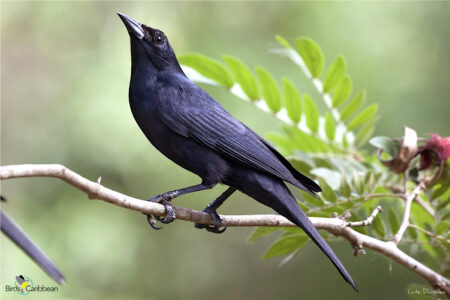
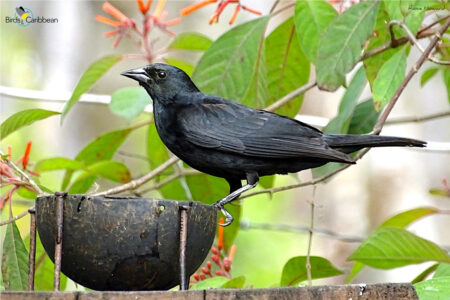
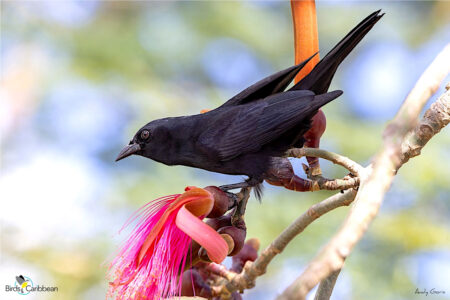
Activity of the Day
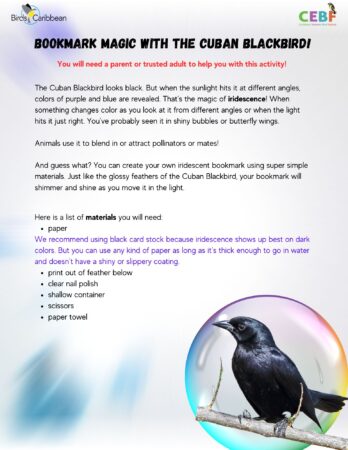 FOR KIDS : The Cuban Blackbird looks black. But when the sunlight hits it at different angles,
FOR KIDS : The Cuban Blackbird looks black. But when the sunlight hits it at different angles,
colors of purple and blue are revealed. This beautiful effect is known as iridescence! Several birds have feather like this, and you might also have seen this in shiny bubbles or on butterfly wings.
You can create your own iridescent bookmark using simple materials. Just like the glossy feathers of the Cuban Blackbird. Your bookmark will shimmer and shine as you move it in the light.
You will need:
- paper
We recommend using black card stock because iridescence shows up best on dark
colors. But you can use any kind of paper as long as it’s thick enough to go in water
and doesn’t have a shiny or slippery coating. - print out of the feather template ( provided in our instructions )
- clear nail polish
- shallow container
- scissors
- paper towel
You will need a parent or trusted adult to help you with this activity.
FOR KIDS AND ADULTS : Enjoy this video of a Cuban Blackbird in the wild!
